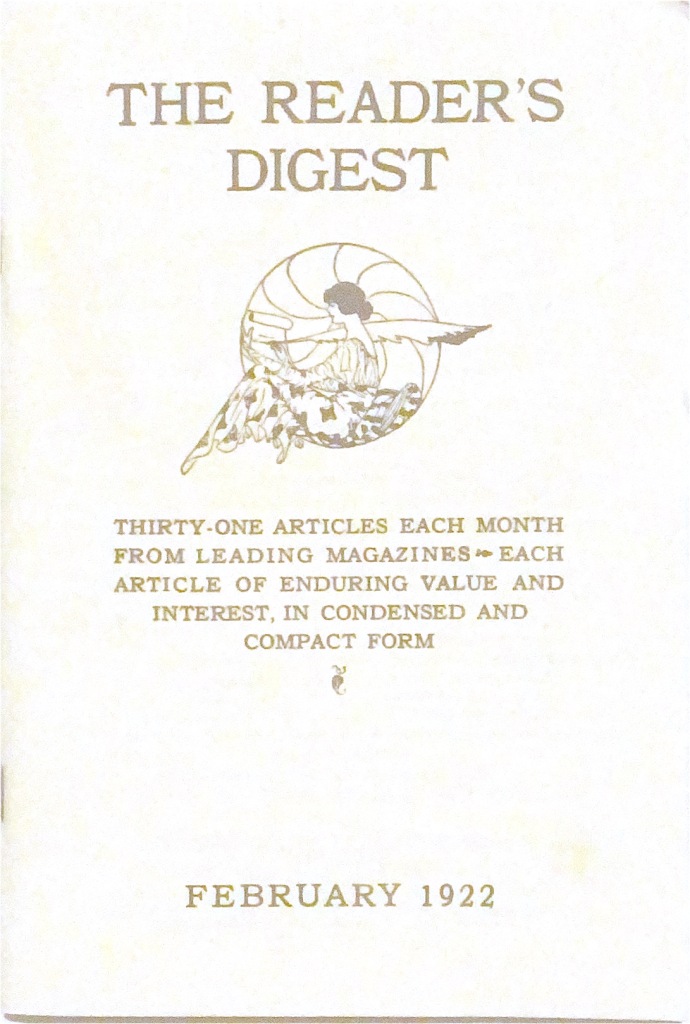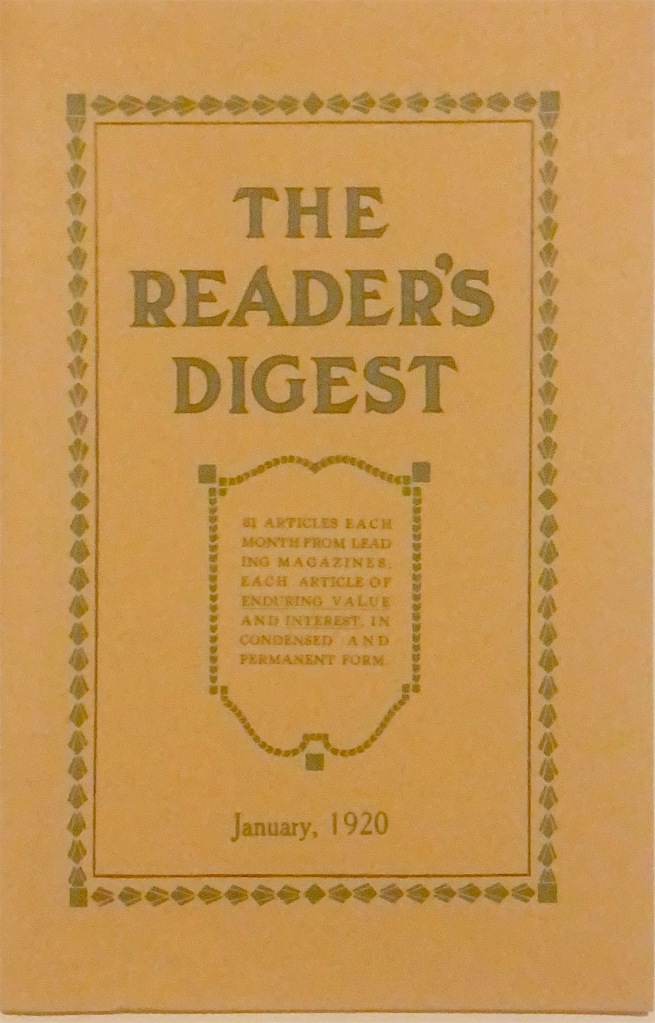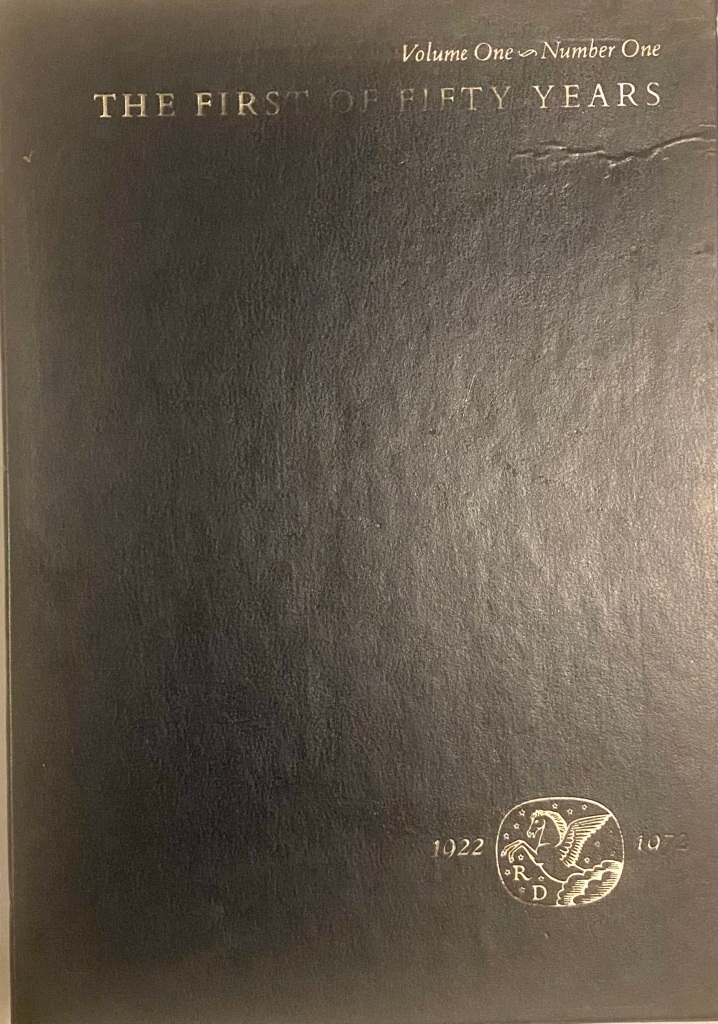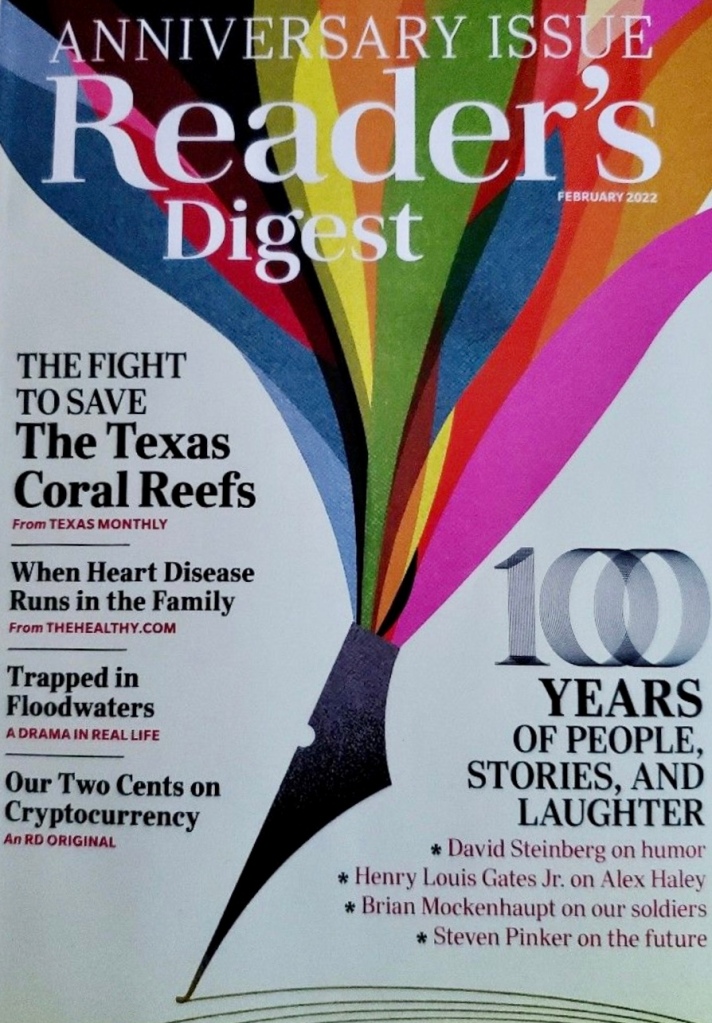After more than two years of hearing that his magazine idea The Reader’s Digest will never work, DeWitt Wallace, with the help of his wife Lila Bell Acheson, launched the magazine in February 1922. Today the magazine is celebrating its centennial year with the February 2022 issue… and as Paul Harvey used to say, “and now you know the rest of the story.” Enjoy

Reader’s Digest is 100, or should I say The Reader’s Digest is 100. In reality, The Reader’s Digest is 102 years old. The founder, DeWitt Wallace produced his first issue in January of 1920 and shopped it around with all the major magazine publishers in New York City. The response was, with no exception, this magazine will never work.
The mission of The Reader’s Digest, as he called it back then, was summed up on the cover of the magazine and in his very first editorial. On the cover of the January 1920 issue the concept of the magazine was stated clearly:
“31 articles each month from leading magazines. Each article of enduring value and interest. In condensed and permanent form.”

The manifesto of the magazine was published on the very first page of the magazine. It read:
The Reader’s Digest:
- The easiest way in which to learn something really worth while every day.
- Because of its “boiled down” interest and pocket size – the most practical and pleasant means of utilizing old moments.
- The one magazine containing articles only of such permanent and popular interest that each issue will be of a great value a year or two hence, as on the date of its publication.
- The Magazine of 100% Educational Interest – no fiction, no advertisements, no articles on purely transient topics and no articles of limited or specialized appeal.
- The Reader’s Digest in condensing its articles, eliminates the unessential and less interesting “filler” which is found in many magazine articles—often simply that reading matter may accompany the advertisements.
- The one magazine that is preeminently worth keeping—and binding—for future reference and enjoyment. If it is desired to remove any article, this is an easy matter, there being but one article on a page.
- The biggest magazine value – regardless of price – on the market. You find one or two articles, perhaps, of enduring interest in the ordinary magazine. The Reader’s Digest contains 31 such articles in each issue – “one a day” – each one a “feature” article digested from some periodical.
- The Reader’s Digest believes that a thing really worth reading is worth remembering – which is possible in most cases only if the article is kept for occasional reference in the future. For this purpose, the numbered sub-heads at the beginning of the articles will be found helpful. Many of the “popular” magazines are too bulky to preserve – and not worth it for the little good matter which they contain.
Needless to say, all the aforementioned reasons to why The Reader’s Digest is a good proposed magazine, did not convince the major publishing houses in New York City to give it the green light. Disappointed, DeWitt Wallace decided to give up his idea and shelved the January 1920 issue of the magazine.
In 1921 he married Lila Bell Acheson, a sister of one of his college classmates, and she happened, as the story goes, to see the copy of The Reader’s Digest DeWitt produced. She loved the idea and convinced her newly married husband to publish the magazine on their own with some financial help from her brother. The first regularly published issue of The Reader’s Digest came out in February 1922. A new tag line was added to the magazine, “The Little Magazine.”
Instead of DeWitt Wallace as Editor alone, the masthead carried four names as editors in the following order: Lila Bell Acheson, DeWitt Wallace, Louise M. Patterson, and Hazel J. Cubberley. The issue carried an editorial signed by Lila Bell Acheson in which she showed her skills of condensing the eight points DeWitt Wallace wrote in that preview issue to only four points. She wrote under the heading A Word of Thanks:
“The Reader’s Digest has been made possible by you, and by other charter subscribers who have responded during the past four months to a letter telling of our proposed plan.
In behalf, not only of ourselves, but of all those who have felt that the fulfillment of our plan would fill a very general need, we thank you. Without your advance support – and that of other charter subscribers – this magazine could not have materialized.
We believe you will find The Reader’s Digest of even greater value and interest than you had anticipated. These features will no doubt appeal particularly:
- Thirty-one articles each month – “one a day” – condensed from leading periodicals.
- Each article of enduring value and interest – today, next month, or a year hence; such articles as one talks about and wishes to remember.
- Compact form; easy to carry in the pocket and to keep for permanent reference.
- A most convenient means of “keeping one’s information account open” – of reading stimulating articles on a wide variety of subject.

In 1972, The Reader’s Digest, in celebration of its 50th anniversary reprinted both first issues of the magazine and housed them in a nice blue box with gold ink touting The First Of Fifty Years. Today Reader’s Digest celebrates its Centennial Issue celebrating the “first of 100 years” with many more to come.
I guess the moto of this story is when someone tells you this idea will never work, take that as a good sign that this idea will not only work, but it work very well indeed.

Congratulations Reader’s Digest and here’s to the next 100 years.




















